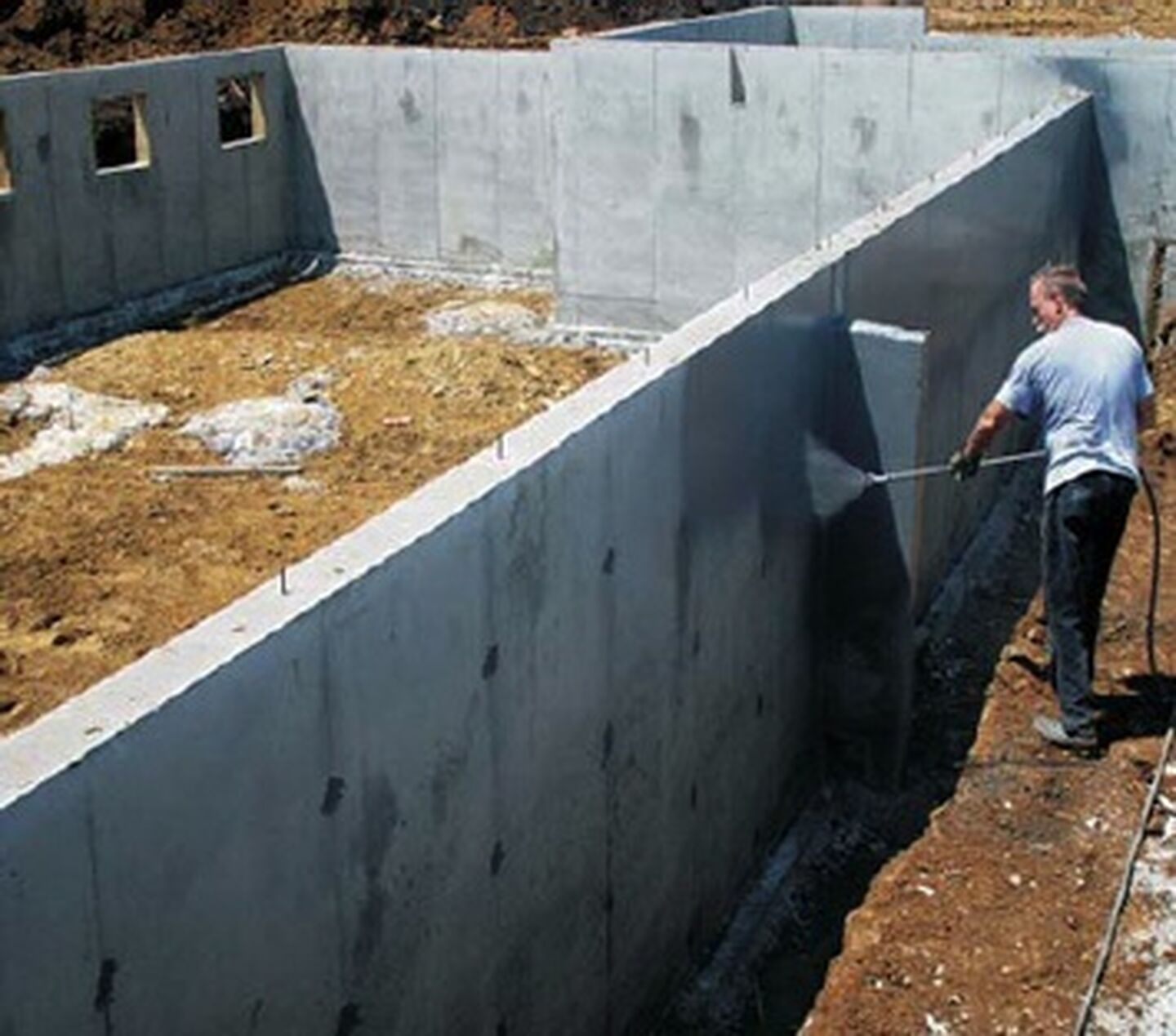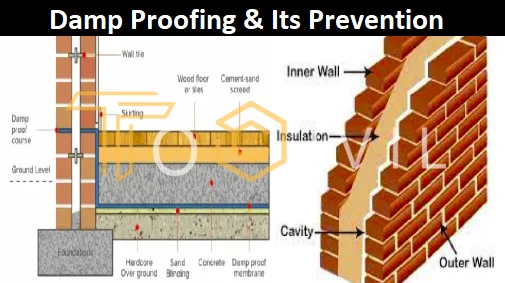Exploring the Various Techniques and Solutions for Effective Damp Proofing
Dampness in buildings positions substantial obstacles to both structural stability and interior air high quality. Different methods and solutions have arised to combat this pervasive issue. From typical damp-proof membrane layers to ingenious chemical therapies, each method offers special benefits. Understanding these alternatives is vital for reliable dampness control. However, picking the appropriate remedy depends on specific structure problems and requirements, triggering more exploration into one of the most efficient damp proofing strategies offered.
Comprehending the Reasons For Moisture
Although moisture can arise from various resources, recognizing these reasons is essential for reliable remediation. Frequently, dampness stems from 3 key resources: rising damp, permeating moist, and condensation. Rising damp occurs when groundwater takes a trip upwards through permeable products, such as block or rock, typically due to a lack of an efficient barrier (damp removal newcastle). Passing through wet is normally triggered by external aspects, including roofing system leakages, malfunctioning rain gutters, or harmed walls, enabling water to penetrate a property. Condensation, on the various other hand, arises from excess dampness airborne, typically aggravated by poor ventilation and temperature differences, resulting in water droplets creating on surfaces. Determining these underlying problems is essential, as each sort of dampness calls for a tailored approach for removal. Proper evaluation assists in establishing the most effective services, inevitably protecting the structural stability of a building and improving interior air high quality
Typical Damp-Proof Membrane Layers

Chemical Damp-Proofing Solutions
Chemical damp-proofing remedies provide a cutting-edge technique to stopping moisture invasion in buildings. These methods usually entail the application of fluid chemicals that penetrate masonry and form an obstacle versus increasing damp. Commonly used chemicals include silanes, siloxanes, and various other water-repellent agents that react with surface materials to create a hydrophobic layer.The application process usually calls for boring openings into the walls, infusing the chemical solution, and enabling it to cure. This technique is especially beneficial for older structures where typical damp-proof membrane layers may be impractical. Chemical damp-proofing can be much less turbulent and extra cost-effective than considerable remodelling projects.While reliable, these options depend on appropriate application and environmental conditions for peak performance. damp removal newcastle. Routine maintenance and tracking are important to ensure the longevity of the damp-proofing treatment. In general, chemical damp-proofing stands for a versatile option for guarding buildings against moisture-related damages
Cavity Wall Building And Construction Methods
Dental caries wall building and construction strategies supply countless advantages, specifically in dampness control and power performance. By integrating an air gap in between two layers of stonework, these wall surfaces effectively alleviate water access while improving insulation. This combination not just protects frameworks from dampness but also adds to decreased energy usage.
Advantages of Tooth Cavity Wall Surfaces
When thinking about efficient wet proofing approaches, the benefits of cavity walls stand out plainly. Cavity walls consist of two separate layers, developing an air gap that successfully decreases moisture penetration. This style decreases the risk of wetness, as the external wall works as a barrier against rainfall and water access. In addition, tooth cavity walls boost thermal insulation, which adds to energy efficiency by minimizing warmth loss. They likewise offer audio insulation, aiding to produce a quieter indoor environment. Moreover, the air void permits ventilation, which helps in moisture control and lowers the likelihood of mold development. These advantages not only boost the general comfort of a structure yet likewise add to its durability and structural stability.
Wetness Control Approaches
Efficient wetness control techniques are important in cavity wall building to guarantee long-lasting security against wetness. One key approach includes the unification of weep holes, which promote water drainage from the dental caries, stopping build-up. Additionally, using breathable membranes can help take care of wetness degrees while allowing entraped vapor to leave. Appropriate positioning of insulation is also crucial, as it should not obstruct drainage courses. Additionally, ensuring that the external fallen leaves of the tooth cavity wall are constructed with waterproof products enhances overall longevity. Regular upkeep checks are important to identify any blockages or damages early, safeguarding the framework's stability. Inevitably, a mix of these strategies develops a robust protection against moisture breach in cavity wall surfaces.
Insulation and Power Efficiency
Insulation plays an important role in enhancing energy efficiency within tooth cavity wall building and construction. By incorporating protecting materials, these wall surfaces produce a thermal barrier that minimizes heat loss and minimizes energy usage. Reliable insulation not only assists preserve a secure interior temperature level but likewise minimizes the danger of wetness, as it prevents condensation within the wall surface cavity. Different strategies, such as making use of stiff foam boards or mineral woollen, can be utilized to achieve ideal insulation performance. In addition, correct installment is important to guarantee that gaps and gaps are lessened, which can otherwise endanger power performance. Eventually, a well-insulated dental caries wall contributes greatly to total sustainability and reduces cooling and heating expenses for homeowners.
Outside Damp Proofing Methods
Outside wet proofing methods are crucial for securing frameworks from moisture infiltration. 2 efficient strategies include the application of water-proof membranes and the setup of French drains. These services help alleviate water build-up and preserve the stability of buildings.
Waterproof Membrane Layer Application
While various methods exist for protecting against dampness ingress, the application of water resistant membranes remains a very reliable outside damp proofing method. These membranes are normally made from materials such as polyethylene, rubber, or customized asphalt, giving a robust obstacle versus water penetration. The installation process involves applying the membrane to the outside surface areas of walls or structures, making certain total coverage to avoid leaks. Correct adhesion and securing at joints are essential to maximizing performance. Waterproof membranes can be used in various forms, consisting of liquid layers and sheet membrane layers, permitting versatility based on the certain requirements of the structure. This technique not only secures structures from moisture but additionally improves their durability and architectural integrity.
French Drainpipe Installment
One reliable method for managing groundwater and preventing moisture build-up around a building's foundation is the setup of a French drainpipe. This water drainage system contains a trench loaded with gravel and a perforated pipeline that reroutes surface area water away from the structure. Proper installation requires mindful preparation, making certain that the drain inclines far from the framework to promote perfect water circulation. In addition, the location of the drain is important; it needs to be positioned in areas prone to pooling or excess dampness. Regular upkeep, including clearing up debris from the gravel and guaranteeing the pipeline continues to be unhampered, is important for long-lasting effectiveness. Inevitably, a well-installed French drainpipe can substantially lower the threat of water-related problems in basements and foundations.
Inside Waterproofing Approaches
Interior waterproofing techniques are essential for safeguarding a structure's interior from wetness infiltration and prospective water damages. These strategies normally entail the application of specialized materials and strategies developed to create a moisture obstacle within the structure. One usual technique is the use of water resistant finishings or sealants on walls and floorings, which protect against dampness from passing through surfaces.Additionally, setting up interior drainage systems, such as sump pumps, can effectively manage water buildup in cellars and creep rooms. One more technique includes the use of vapor obstacles, which are installed to prevent wetness activity from the ground into living spaces.Moreover, dealing with any splits or gaps in wall surfaces or foundations with suitable sealants guarantees a complete protection versus water invasion. By carrying out these indoor waterproofing methods, homeowner can greatly minimize the threat of mold and mildew growth, structural damages, and various other moisture-related problems. Proper execution of these strategies is vital for long-lasting security and structure honesty.
Regular Upkeep and Evaluation Practices
Normal maintenance and assessment methods are crucial for guaranteeing the lasting performance of wet proofing options in any type of building. Regular checks enable homeowner to determine early signs of dampness intrusion, such as peeling off paint, mold growth, and stuffy odors. These indications can indicate underlying issues that call for instant attention.Inspections need to be performed at the very least each year, focusing on at risk locations like basements, creep areas, and exterior wall surfaces. Throughout these analyses, building proprietors must examine sealants, water drainage systems, and ventilation to confirm they work correctly.Additionally, keeping downspouts and seamless gutters is vital, as clogged systems can cause water accumulation near the structure. Implementing a regular upkeep timetable, together with prompt repair services, can considerably extend the lifespan of damp proofing steps and safeguard the structural stability of the building. Positive steps eventually add to the general health and safety and security of the living atmosphere.
Regularly Asked Questions
How Lengthy Does Damp Proofing Normally Last?
The period of damp proofing performance differs, commonly lasting between 20 to 50 years. Variables such as application high quality, environmental conditions, and maintenance techniques significantly affect the longevity of the wet proofing therapy.

Can I Damp Proof My Home Myself?
The individual pondered the expediency of DIY damp proofing. With proper study and the best products, it is feasible. Nevertheless, they likewise identified the significance of expert support to ensure lasting effectiveness and prevent future issues.
What Are the Indicators of Inefficient Damp Proofing?
Indications of inadequate moist proofing include persistent musty odors, noticeable mold growth, peeling off paint, wet spots on walls, and timber decay - damp removal newcastle. Homeowners ought to attend to these issues immediately to avoid further damages and wellness worries
Does Damp Proofing Affect Indoor Air Quality?

How Much Does Professional Damp Proofing Expense?
Expert moist proofing expenses vary considerably, typically varying from $1,000 to $5,000 relying on the building's dimension, the extent of the moist problem, and picked techniques. Each circumstance calls for a customized evaluation for accurate rates. Typically, dampness stems from 3 primary sources: rising moist, passing through damp, and condensation. When thinking about efficient damp proofing approaches, the benefits of tooth cavity wall surfaces stand out prominently. External wet proofing techniques are important for securing structures from moisture infiltration. While various methods exist for protecting against dampness ingress, the application of water resistant membranes stays a highly effective outside wet proofing strategy. Signs of ineffective moist proofing include consistent stuffy smells, noticeable mold development, peeling off paint, moist spots on wall surfaces, and timber damp proofing newcastle decay.